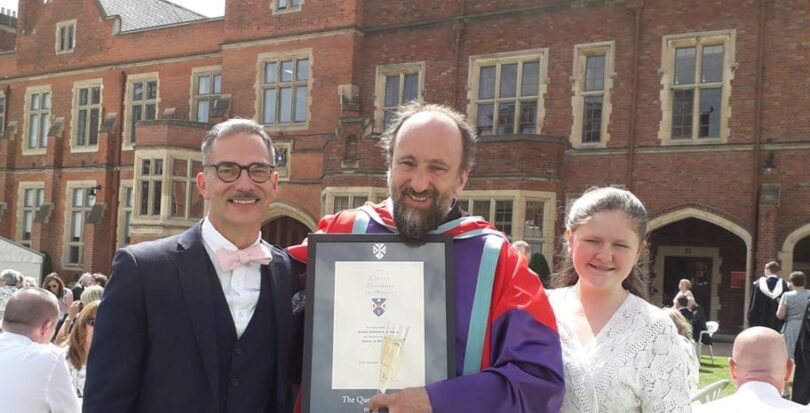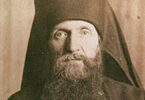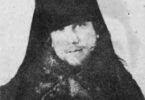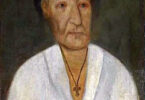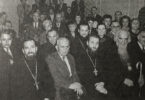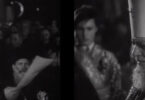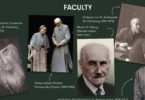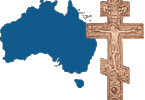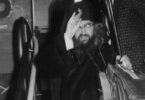“Not unto us, O Lord, not unto us,
but unto thy name give glory”.
(Ps. 113:9)
Founding
On February 12/25, 1959, at a session of the Synod of Bishops of the ROCOR, Fr. George Grabbe, chancellor of the Synod of Bishops, presented draft statues for a Fund for Assistance (FFA) to the Russian Orthodox Church Outside of Russia. [1]Tserkovnaia Zhizn’ [Church Life], no. 3-4 (1959): 37-39; Excerpt from minutes from a session of the Synod of Bishops. Archive of the Fund for Assistance to the ROCOR. “Statutes” Folder. Box … Continue reading Following discussion, it was resolved to ratify these regulations, “entrusting His Eminence the President of the Synod to enact [it]”. [2] Archive of the Fund for Assistance to the ROCOR. “Statutes” Folder. Box 6. The work of the Fund has always been under the overall leadership of the First Hierarch of the Russian Orthodox Church Outside of Russia.
These statutes, which were adopted over 50 years ago, have remained the official regulations for the Fund to this day. This Fund’s principal mission is outlined in Section 1b: “To seek material means to sustain and expand the work of the Russian Orthodox Church Oustide of Russia”. [3] “Statutes”, Tserkovnaia Zhizn, no. 3-4 (1959): 37. On March 4/17, 1959, the statutes were enacted by Metropolitan Anastasy Gribanovskii (†1965), who gave his blessing for the Fund to begin its work and confirmed the structure of the board and the audit commission. [4] Letter of March 5/18, 1959, from Archpriest George Grabbe to A. T. Shishkov. Archive of the Fund for Assistance to the ROCOR. “Statutes” Folder. Box 6.
1959 in the History of the ROCOR
This year was marked by an overall upswing in the affairs of the Russian Church Abroad in North America.
The St. John of Kronstadt Memorial Fund was particularly active. At Christmas 1958 alone, the sum of $1766, 87 cents was sent to “the lonely and the sick in sanatoria, and those in need in camps and monasteries”. [5]Today, adjusted for inflation, this sum exceeds $15,000. US Dollar Inflation Calculator. https://www.in2013dollars.com/. Accessed August 15, 2019; “Fond im. o. Ioanna Kronshtadtskogo v g. Iutika, … Continue reading A branch of the Fund was opened in Australia. [6] “Otdelenie Fonda imeni o. Ioanna Kronshtadtskogo v Avstralii” [“A Branch of the St. John of Kronstadt Memorial Fund in Australia”]. Pravoslavnaia Rus’, no. 3 (1959):14. The Society of Saint Vladimir actively raised funds to construct a memorial church to the Holy Prince Vladimir in Jackson, New Jersey. $26,450 were raised in 1958. [7]This corresponds to over 200,000 2019 dollars. Cf. Fn. 5. “K postroeniiu khrama-pamiatnika Sv. kn. Vladimira i kreshcheniiu Rusi” [“On the Construction of a Memorial Church to the Holy Prince … Continue reading St. Vladimir Youth Groups were organized in North America and Australia. [8]Archpriest Andrei Sommer, Ot zapada do vostoka: opyt molodezhnogo sluzheniia v Russkoi Zarubezhnoi Tserkvi [From East to West: Experience of Youth Ministry in the Russian Church Abroad] (New York, … Continue reading In September 1959, St. Sergius High School was opened on the premises of the Synod of Bishops. It had the status of an accredited American high school. In order to fund the school, a special committee was founded, headed by Prince Teymuraz Constantinovich Bagration-Mukhransky. [9]“Obrashchenie k pravoslavnym liudiam po povodu otkrytiia v g. N’iu-Iorke polnopravnoi russkoi gimnazii” [“Appeal to Orthodox People Concerning the Opening of a Fully-fledged Russian High … Continue reading
In early 1959, Serge Semenenko (†1980), a talented investor and Vice-president of the Board of Directors of First National Bank of Boston, provided funds for the ROCOR Synod of Bishops to acquire and renovate a historic mansion at the east end of Park Avenue in Manhattan. [10]The building had previously belonged to George Baker, the vice-president of First National Bank (now Citibank) (+1937). “The Upper Eastside Book: Park Avenue”. … Continue reading In autumn 1959, a Council of Bishops of the ROCOR was held in the new building, with 15 hierarchs from Europe, Australia, and North and South America attending. [11]There were more bishops only at the First All-Diaspora Council of 1921. “Arkhiereiskii Sobor Russkoi Zarubezhnoi Tserkvi” [“The Council of Bishops of the Russian Orthodox Church Abroad”], … Continue reading On October 25, the Great Blessing of the Cathedral of the Sign – where the Kursk Root Icon of the Mother of God, guide to the Russian ecclesiastical emigration, is kept – took place. The rite of sanctification was presided over by Metropolitan Anastasy, First Hierarch of the ROCOR. [12]“Osviashchenie verkhnego khrama v Sinodal’nom dome” [“The Consecration of the Upper Church in the Synod House”], Pravoslavnaia Rus’, no. 20 (1959): 12; The procession with relics … Continue reading
The sessions of the council were unprecedented in their length, lasting from October 18 to November 14. The public part of the meetings took place in the ballroom of the Hotel Diplomat in midtown Manhattan. The solemnity and scale of the event showed that the Russian Church Abroad, which had seemingly ceased to exist in 1945, was in actual fact still going strong.
One of the most important decisions of the Council was to found a Synodal Committee of Liturgical Music. Its main task was to train choir directors and organize congresses on liturgical music. [13] Iz deianii Arkhiereiskogo Sobora Russkoi Pravoslavnoi Tserkvi Zagranitsei [From the Acts of the Council of Bishops of the Russian Orthodox Church Abroad] (Jordanville, 1960) 148-149. Apart from this, the Synod of Bishops put Archbishop John (Maximovich, Saint; †1964) in charge of the Brotherhoods of Spiritual Renewal, which were to be established in each parish of the ROCOR. [14] “Arkhiereiskii Sobor Russkoi Zarubezhnoi Tserkvi” [“The Council of Bishops of the Russian Orthodox Church Abroad”], Pravoslavnaia Rus’, no. 22 (1959): 13.
It was in this productive atmosphere of development that the Fund for Assistance to the Russian Church Abroad was established. Russian political refugees who had settled in the United States could now support the ROCOR, the main unifying force among the White Russian emigration over the course of 40 years. A new level of prosperity, combined with the highly developed charity culture in the United States, meant that the members of the Church could not only survive, but also begin to give back to the ROCOR what they had gotten from it. [15]Prince T. C Bagration-Mukhransky, K sboru sredstv na vysshee tserkovnoe upravlenie Russkoi Pravoslavnoi Tserkvi Zagranitsei i na ee deiatel’nost’ [On Fundraising for the Supreme Church … Continue reading The members of the first board of the fund addressed the Orthodox people as follows: “Our foremost goal is immediate and comprehensible to all those Russians living abroad. If each of us were to look back at the past years of his life, he would certainly recall the spiritual, moral, and sometimes even material support he has received from our Orthodox Church. Often, our lives were saved only through the advocacy of the Church clergy. Let us recall the assistance rendered by our clergy in saving many of us from repatriation or resettlement from Germany, Austria, and China”. [16] Offprint from an unidentified publication. “Statutes” Folder. Archive of the Fund for Assistance to the ROCOR. Box 6. In support of this thought, the section 1a of the statutes of the Fund reads: “The confession of the great mercy of God is widespread amongst the Russian émigrés. This mercy is manifest in the fact that our Orthodox Russian Church is with us in exile, standing guard for the truth, caring for our spiritual needs, and raising up a generation of young people in the spirit of Orthodoxy and love for Russia”. [17] Tserkovnaia Zhizn’, no. 3-4 (1959): 37.
Thus, we can say that, by 1959, the wanderings of the Russian intelligentsia had come to an end with their arrival in the “promised land”. Their flight from the Bolsheviks had ended and they could at last “unpack their bags”. [18]V. K. Golitsyn, “Nad vymyslom slezami obol’ius’” [“I shall wet my fictions with tears”], Novyj Zhurnal [New Journal] (2013), 271. “Russkii tolstyi zhurnal kak esteticheskii fenomen” … Continue reading
The Leadership and Importance of the Fund
From the day it was founded, the Fund was linked to the Russian aristocracy through the family of the main ideologue of the Russian Church Abroad, Archpriest George Grabbe. The first president of the board of directors was Alexander Tikhonovich Shishkov. [19]He graduated from the Saint Petersburg Institute of the Transportation Corps, lived in Yugoslavia in the interwar period, and was part of the Russian Liberation Army. A. T. Shishkov. Rodovid. … Continue reading His sister Anna Tikhonovna (†1981) was the wife of Dimitry Nikolaevich Schmemann and the mother of Protopresbyter Alexander Schmemann (†1983) and his twin brother Andrei (†2008). [20] Schmemann, Protopresbyter Alexander. Dnevniki [Diaries] 1973-1983 (Moscow, 2005), 707. Alexander Tikhonovich’s son, Archpriest Vladimir (†2009), was married to Fr. George Grabbe’s daughter Maria. In March of 1965, Ivan Ilarionovich Makharadze (Marr, †1975), Dean of Holy Trinity Seminary from 1963 to 1965, replaced Alexander Tikhonovich as the president of the board of directors. [21]Report by the board of directors of the FFA to a general assembly of board members, which took place in New York on February 7/20, 1960. “The Fund: Various Years” Folder. Archive of the Fund for … Continue reading However, he resigned his position that same year and was succeeded by the vice-president of the board, Teymuraz Constantinovich Bagration-Mukhransky, who devotedly served as president of the Fund until his death in 1992. [22]Teymuraz Constantinovich was also head of the Tolstoy Fund and the Imperial Orthodox Palestine Society (ROCOR). V. Molchanov, “Prince T. C. Bagration-Mukhransky Dies”, Pravoslavnaia Rus’, … Continue reading Under his leadership, the new board of directors was able to increase the size of donations significantly while lowering operating costs. [23]Letter of T. C. Bagration-Mukhransky to Archbishop Vitaly of Montreal and Canada, August 28/September 10, 1971. “Correspondence with Bishops and Other Persons” Folder. Archive of the Fund for … Continue reading
It is important to note that the Fund became a constant benefactor of ROCOR monasteries in France, England, Chile, Germany, and on Athos, and of small parishes in Berlin, Bizerte, and Paris. [24] The Fund for Assistance to the Russian Orthodox Church Outside of Russia. Accounts for 1966. “The Fund: Various Years” Folder. Archive of the Fund for Assistance to the ROCOR. Box 6. The burden of supporting the lives of these parishes fell upon the shoulders of their brothers and sisters from more affluent countries. In 1966, the Fund counted 1707 members and donors. [25]Report of the President of the Board of Directors of the Fund for Assistance to the Russian Orthodox Church Outside of Russia to a general assembly of members of the Fund, which took place in New … Continue reading A mere seven years after it was founded, the Fund had a capital of over $17,418, which, accounting for inflation, is equivalent to approximately $150,000 today. [26] Dollar Inflation Calculator. https://www.in2013dollars.com/. (Accessed August 15, 2019).
The Fund also took part in the struggle against atheism. In the 1960s and 1970s, it provided significant support to the “Pravoslavnoe delo” (“Orthodox Cause”) brotherhood in Geneva, which conducted missionary work in the USSR.
Activities of the Fund
In 1969, the Fund issued its first wall calendar. These calendars are popular to this day with ROCOR parishioners. [27] “The Fund: Various Years” Folder. Archive of the Fund for Assistance to the ROCOR. Box 6.
That same year, the Fund began its continuous, lasting support for the sole seminary of the ROCOR, Holy Trinity Orthodox Seminary (HTOS) in Jordanville, NY. In 1972, the Board adopted a resolution to provide an annual scholarship of $1000 to talented seminarians. [28]Report to the Board of Directors of the Fund for Assistance to the Russian Orthodox Church Outside of Russia. “The Fund: Various Years” Folder. Archive of the Fund for Assistance to the ROCOR. … Continue reading From that time, its aid to the seminary has continued uninterrupted. For example, in the 2018-2019 academic year, $10,000 were transferred to the Master’s program at HTS.
The Fund actively supports conciliar work within the Russian Church Abroad. In 1974, the third All-Diaspora Council took place in Jordanville, and the Fund provided $5000 to help organize it. The organization of the Fourth All-Diaspora Council in San Francisco in 2006 was also carried out to a large degree with funds raised by the FFA. [29]Pavel Lisitsin (a subdeacon of the ROCOR London Cathedral and an FFA Director) became the major single donor of the event. In 2007 Stanislav Kondrashov assisted through the FFA to cover travel … Continue reading
Special attention has been paid to the missions and monasteries of the ROCOR in Israel and Jordan. The Fund has organized pilgrimages from North America to the Holy Land, which have been a major source of moral and spiritual support for the ROCOR’s Russian Ecclesiastical Mission and its monasteries in Palestine. In 1969 alone, $5424,98 cents were transferred to the Russian Ecclesiastical Mission in Jerusalem. [30] Fund for Assistance to the Russian Orthodox Church Outside of Russia. Accounts for 1969. Archive of the Fund for Assistance to the ROCOR. “The Fund: Various Years” Folder. Box 6. Moreover, due to imprudent administrative and financial management by the head of the Russian Mission, Archimandrite Antony Grabbe (†2005), the Fund’s leadership had to preserve a delicate balance in guaranteeing, on the one hand, that all the money was reaching the Holy Land, and on the other, in upholding the authority of the church administration. [31]Prince T. C. Bagration-Mukransky. Letter of Vladimir (surname unknown) from August 21, 1973. “Correspondence with the Holy Land, 1973” Folder. Archive of the Fund for Assistance to the ROCOR. Box … Continue reading
The Fund carried out its work on the premises of the Synod of Bishops and from the very beginning regarded supporting the Synod and its Most Reverend President as part of its mission. In 1969, $8413,12 cents were transferred to the Synod, and $8425 in 1971. [32] Accounts for 1969 and 1971. Archive of the Fund for Assistance to the ROCOR. “The Fund: Various Years” Folder. Box 6. Section 1b of the Statutes of the FFA was quoted at the very beginning of the article. In the “Appeal to Orthodox People” (1959) issued by the first board of the Fund, this point was made in more detail: “To seek out material means for the clergy to exist and carry out their activities, to maintain the Synod House in New York as the center of the life and work of the entire Russian Orthodox Church Abroad (…)” [33] Offprint from an unidentified publication. “Statutes” Folder. Archive of the Fund for Assistance to the ROCOR. Box 6. It is possible that the version of the statutes published in the journal Tserkovnaia Zhizn’ (Church Life), in which the Synod of Bishops is not mentioned, was influenced by the distrust by some of the episcopate and laity of the Synod’s chancellor Fr. George Grabbe. These people would not have made donations to benefit the Synod. [34]In the 1950s and 1960s, the Episcopate of the ROCOR was made up of two groups: the “zealots” and the “diplomats”. The former sought to avoid a compromise between the Orthodox worldview and … Continue reading Archbishop John (Maximovich) of San Francisco wrote in a letter to the president of the board, “I understand full well that the Synod is in need of assistance and that this support is to come from everyone, first and foremost from the bishops and clergy. [Here St. John explains the strained material situation in the Western American diocese.] Moreover, the collapse of the authority of the hierarchy, and especially of our supreme church governance, is of no little significance. It is with deep sorrow that we acknowledge that it does not enjoy the same trust as it did under Metropolitan Antony and in earlier years under Metropolitan Anastasy”. [35] Letter of September 9/22, 1965. Archive of the Fund for Assistance to the ROCOR. “Correspondence with Bishops” Folder. Box 8. Despite such upheavals, the Fund, seeing its mission in strengthening the center of the Russian Church Abroad, took it upon itself to renovate the building of the ROCOR Synod of Bishops. In 1982, the roof needed repairs, uneven paving stones in the courtyard were impeding water runoff, the boiler broke down, et cetera. [36] Building Committee. Renovation of the Synod House. Appeal of June 3/16, 1984. “Renovation of the Synod House” Folder. Archive for the Fund for Assistance to the ROCOR. Box 12. In 1990, a special Synod Memorial Fund was created within the FFA. This fund was, to a large extent, supplemented by money raised at charity concerts organized in the church hall by Princess Elena Nikiforovna Volkonskaya (†2015). [37]Bagration-Mukhransky, Prince T.C. Fond pomoshchi sinodal’nomu zdaniiu v N’iu-Iorke [Fund for Assistance to the Building of the Synod in New York]. “Renovation of the Synod House” … Continue reading
“Always Ready! For Russia!” [38] The slogan of the St. George’s Pathfinders.
After the Teymuraz Constantinovich’s death on April 10, 1992, Yury Iliodorovich Schidlovsky (†2009) became the president of the board of the Fund. He was born in Morocco in 1927 into the family of Iliodor Nikolaevich [Schidlovsky] and Baroness Ksenia Yurievna (née Meyendorff). Yury Iliodorovich tirelessly developed the Fund together with other enthusiasts from the first generation of White Russian émigrés to have been born abroad. Nicolas Yurievich, son of Yuri Iliodorovich Schidlovsky and a board member of the Fund, recalls about his Father’s relationship to the fund: “For him, this form of service was, perhaps, one of the most important in his life and the most direct way he could take part in the life of the Church”. [39] From an interview with the author on August 23, 2019.
Yury Iliodorovich’s presidency came at a time when the ROCOR was continuing to struggle for Orthodoxy within Russia. This struggle found expression in the 1990 resolution of the Synod of Bishops to accept under its omophorion clergy from the Moscow Patriarchate and from parishes in the USSR who wished to join the ROCOR. Up until ecclesial communion was restored in the Russian Church in 2007, a significant portion of the Fund’s efforts was aimed at supporting these communities and institutions. Due to a serious illness, Yury Schidlovsky retired from his role on April 19, 2007.
In addition to this, the Fund developed the missionary activity of the Russian Church Abroad. Support was continued for the Holy Dormition Monastery in Chile and the Lesna Convent in France. Funds were set aside to construct a Church of the Annunciation in Uganda and a mission in Haiti, and aid was provided to Brother Isaac Lambertsen (in monastic tonsure, Joseph; †2017), a long-serving staff member of the Synod and a reader and choir conductor at the Synodal Cathedral, who carried out the English translation of a plethora of Church Slavonic liturgical texts.
Transition to a Professional Approach
In 2005 by the initiative of then-Treasurer of the Synod of Bishops, Archpriest Peter Holodny, a professional fundraising organization (Changing Our World) was hired by the Synod of Bishops at its own expense to conduct widespread interviews and surveys to identify the best way to continue and expand the work of the FFA. Based on their recommendations, Prince Vladimir Kirillovich Galitzine (†2018) was invited to join the restructured Fund for Assistance. Over the course of more than 40 years, Vladimir Kirillovitch was warden of the Synodal Cathedral of the Kursk-root Icon of the Mother of God of the Sign and ensured a recognizable “face” to the restructured organization. The Fund for Assistance was then separately incorporated as a “supporting organization” of the Synod of Bishops, its mandate identified, fundraising methods modernized and a professional staff hired. [40] Letter of Y. I. Schidlovsky to Donors. September 2007. “Copies of Letters” Folder. Archive of the Fund for Assistance to the ROCOR. Box 3. In 2006, ROCOR First Hierarch Metropolitan Laurus (Škurla; †2007) sent Fr Peter and Archpriest Serafim Gan, the Synod Chancellor, to Washington, DC, to ask Archpriest Victor Potapov to be the new Board President. Father Victor, renowned for his work at the Voice of America, especially his reports on religious topics broadcast to the USSR, was ordained in 1972 after graduating from Holy Trinity Seminary, knew all the hardships of life as a parish priest of ROCOR. [41] Letter to Archpriest Seraphim Gan. March 26, 2007. Archive of the Fund for Assistance to the ROCOR. Box 3 Fr. Victor said concerning the activities of the new Fund: “The Church Abroad consists not only of Russian parishes, but also of a whole array of missions in Pakistan, Indonesia, the Philippines, the Dominican Republic, Mexico, and Costa Rica. Thanks to our parishioners from wealthier countries, we try to support all these missions on a monthly basis. Over the last 12-13 years, we have achieved a qualitatively different level in terms of how we work with donors”. [42] From an interview with the author on August 23, 2019. In general, the work of the Fund merits special, extensive research, for example, statistical studies of the amount of aid and its effectiveness.
Fr. Victor’s work was continued by Mark Selawry, who replaced him in 2011. He grew up in the Church Abroad, traveled a lot and lived in various countries, and he is therefore acquainted with the life of ROCOR parishes and monasteries. Mark has brought to the Fund his experience working in management for companies such as Hilton, Disney, and Philip Morris. Under him, the volume of funds at the disposal of the FFA has approached half a million dollars. Of these, over $300,000 were spent in 2017 on activities that come under Section 1b of its Statues, “expanding the work of the Russian Orthodox Church Outside of Russia”. Over $146,000 were spent on supporting the missions mentioned by Fr. Victor (a special place among these is held by the Russian School in Bethany, which continues to exist through the labors of the nuns of Gethsemane Monastery). Over $23,000 went toward supporting the ROCOR youth movement. The ROCOR theological schools received $12,968, and clergy in need received over $19,000. [43] 2017 Financial Report, 2017 Annual Report. Fund for Assistance to the Russian Orthodox Church Outside of Russia. https://goo-gl.ru/5Esf. (Accessed August 23, 2019). This expansion of activities has occurred thanks to the intensified work of the Fund. In order to ensure an effective response to the petitions and needs of the Church, board meetings take place each week via teleconference. The current board consists of Mark Selawry (Copenhagen), Archpriest Viktor Potapov (Cathedral of Saint John the Baptist, Washington), Archpriest George Lagodich (Saint Nicholas Cathedral, Montreal), long-time Fund staff member Alexander Kulesha (Treasurer), Nicholas Ohotin (representative of the Synod of Bishops), and Nicholas Schidlovsky (Dean of the Holy Trinity Seminary in Jordanville) and Alexandra Kargin. All the practical work of the Fund would not be possible if not for the continual, yet hidden work of Fundraising Manager Alena Plavsic, Olivia Morrow, Donor Care Manager and Veronika Alekseyenko – Social Media Manager and Mission Liaison.
In responding to the question of why he takes part in the work of the fund, Board President Selawry, without knowing it, repeated what the first board of directors said 60 years ago: “The other board members and I work without compensation for the Fund because of the great privilege we have received of being members of the Church. And we would like to do everything we can to support Her.” [44] From an interview with the author on August 24, 2019. Mark sees the following challenges for the Fund: “I believe the future of the ROCOR and the FFA are very closely aligned. I think the majority of our efforts is to get people to support the Russian Church Abroad. We [the ROCOR] as any institution have our strengthens and our weakness. The organization is not one of our strengths, but where there is a strength is in the faith. We have a unique edge because we walk the talk. We don’t have huge land holdings and endowments and all the temptations when it comes to the corruption of power and money that other organizations may face. So, the weakness that we have is a very lack of those things that could be a source of temptations in terms of wealth. But I don’t think we have enough of it. I don’t think we have enough support to be as effective in growing the Church, especially outside of Russia. You know it is a tough life when you have to have a full-time job in addition to serving a parish. That is an institutional weakness. And one that we’re not going to solve overnight. But if we as Fund for Assistance could be more in a position to do more of what it does I think we as a church will more effective as well. I wish we [had] enough funds to have every priest full time, especially in parishes that cannot support him, and [he would] not have [to work] two, three jobs just […] to make ends meet.” [45] From an interview with the author on August 24, 2019.
It remains to be said that now, as over the course of its entire history, the Fund is working in harmony with the ROCOR leadership. This is demonstrated by the fact that a representative of the Fund delivers reports at ROCOR Bishops’ Councils.
Conclusion
In my hands is a 509-page textbook on “The Social Ministry of the Russian Orthodox Church”, which was published in Moscow in 2019 by the Saint Cyril and Methodius Institute for Post-graduate Studies. Among other topics, it deals with such issues as: social work with the elderly, disabled, homeless, and addicts…
Our Russian Orthodox Church Abroad is respected for its liturgical piety and for the self-sacrificing service of its episcopate and clergy, who often live in more austere material circumstances than their brethren in their ancestral land. However, apart from the celebration of the daily cycle of services and musical and youth conferences, very little is happening in the Church Abroad. One gets the impression that the concept that all of Christian life should be a liturgy (to take one of the meanings of this word, “ministry”) is very little present among us in “the first world.”
In the Gospel, the Lord clearly explains that by feeding the hungry and caring for the needy and prisoners, His followers care for Him Himself (Mt. 25:31-46). We are all called to this mission; however, it is the sacrificial work of the Fund for Assistance to the ROCOR that carries it out on behalf of many of us. In this regard, the members of the Board have continued in the best traditions of Russian nobility. “For unto whomsoever, much is given, of him shall be much required” (Lk. 12:48).
“The pauper lives off the rich man, and the rich man is saved by the prayers of the pauper” – so the outstanding historian Vasily Osipovich Klyuchevsky (†1911) described the ideals of Muscovy. [46]“Dobrye liudi drevnei Rusi: publichnaia lektsiia, chitannaia v 1891 godu v pol’zu postradavshikh ot neurozhaia” [“Good People of Ancient Rus’: A Public Lecture Read in 1891 to … Continue reading Just as the parishes in West Berlin, Tunisia, and Santiago survived in the 1960s thanks to aiding from their brothers and sisters from Western countries, so even now the torch of supporting missions in third-world countries is borne by parishioners from the largest dioceses of the ROCOR: those in America.
60 years marks the onset of old age, but the Fund is not growing old. This is the difference between organizations and individuals. The work of the Fund shows itself to be an excellent example of conciliar work, demonstrating that there is no need to fear collaboration since the clerics and laypeople within the body of the Church make up one people of God, a “royal priesthood” (I Peter 2:9-10). The names of ruling bishops are commemorated at services, and this underscores the hierarchical ecclesiology of the Orthodox Church, in that a priest is considered to be the “hands” of his bishop. However, it is often the case that our pastors end up stuck within a “congregational” model of existence: one-on-one with the conditions of the aid offered to them by ROCOR parishes. In this situation, the Fund tries to provide necessary support on behalf of the Church to Her ministers.
“Thy care for thy flock in its sojourn” – we hear in the Troparion to Saint John of Shanghai and San Francisco. Over the sixty years of its existence, the Fund for Assistance has tried to do all within its power to follow him in his care for the Orthodox children of the Russian Church who are scattered across the whole Earth: from Shanghai to London and San Francisco to Paris. We wish the members of the Board of the Fund for Assistance to go from “strength to strength” and that their example might inspire all of us who are children of the Russian Church Abroad to take part in the “liturgy after the Liturgy”.
This translation has been made by Walker Thompson through a grant from the American Russian Aid Association, Otrada, Inc.
References
| ↵1 | Tserkovnaia Zhizn’ [Church Life], no. 3-4 (1959): 37-39; Excerpt from minutes from a session of the Synod of Bishops. Archive of the Fund for Assistance to the ROCOR. “Statutes” Folder. Box 6. |
|---|---|
| ↵2 | Archive of the Fund for Assistance to the ROCOR. “Statutes” Folder. Box 6. |
| ↵3 | “Statutes”, Tserkovnaia Zhizn, no. 3-4 (1959): 37. |
| ↵4 | Letter of March 5/18, 1959, from Archpriest George Grabbe to A. T. Shishkov. Archive of the Fund for Assistance to the ROCOR. “Statutes” Folder. Box 6. |
| ↵5 | Today, adjusted for inflation, this sum exceeds $15,000. US Dollar Inflation Calculator. https://www.in2013dollars.com/. Accessed August 15, 2019; “Fond im. o. Ioanna Kronshtadtskogo v g. Iutika, N.Iu.” [Fr. John of Kronstadt Memorial Fund, Utica, NY] Pravoslavnaia Rus’ [Orthodox Russia] no. 3, (1959):14. |
| ↵6 | “Otdelenie Fonda imeni o. Ioanna Kronshtadtskogo v Avstralii” [“A Branch of the St. John of Kronstadt Memorial Fund in Australia”]. Pravoslavnaia Rus’, no. 3 (1959):14. |
| ↵7 | This corresponds to over 200,000 2019 dollars. Cf. Fn. 5. “K postroeniiu khrama-pamiatnika Sv. kn. Vladimira i kreshcheniiu Rusi” [“On the Construction of a Memorial Church to the Holy Prince Vladimir and the Baptism of Russia”]. Pravoslavnaia Rus’, no. 6 (1959): 12. |
| ↵8 | Archpriest Andrei Sommer, Ot zapada do vostoka: opyt molodezhnogo sluzheniia v Russkoi Zarubezhnoi Tserkvi [From East to West: Experience of Youth Ministry in the Russian Church Abroad] (New York, 2012), 79-84. |
| ↵9 | “Obrashchenie k pravoslavnym liudiam po povodu otkrytiia v g. N’iu-Iorke polnopravnoi russkoi gimnazii” [“Appeal to Orthodox People Concerning the Opening of a Fully-fledged Russian High School in New York City”], Pravoslavnaia Rus’, no. 15 (1959): 14. |
| ↵10 | The building had previously belonged to George Baker, the vice-president of First National Bank (now Citibank) (+1937). “The Upper Eastside Book: Park Avenue”. https://www.thecityreview.com/ues/parkave/baker.html. (Accessed August 15, 2019); Glenn Fowler,“Serge Semenenko, Financier, is Dead”. New York Times. April 28, 1980. timesmaschine.nytimes.com. (Accessed August 15, 2019); George Dugan, “Baker Mansion on Park Avenue Sold to Russian Church Group”. New York Times, January 27 (1958). timesmaschine.nytimes.com. (Accessed August 22, 2019). In 1958, the Baker family had sold an unused part of their house to the Synod of Bishops. Gray, Christopher. “Park Avenue Mansions”, Avenue (April, 1980): 65. |
| ↵11 | There were more bishops only at the First All-Diaspora Council of 1921. “Arkhiereiskii Sobor Russkoi Zarubezhnoi Tserkvi” [“The Council of Bishops of the Russian Orthodox Church Abroad”], Pravoslavnaia Rus’, no. 22 (1959): 13. |
| ↵12 | “Osviashchenie verkhnego khrama v Sinodal’nom dome” [“The Consecration of the Upper Church in the Synod House”], Pravoslavnaia Rus’, no. 20 (1959): 12; The procession with relics from the lower St. Sergius Church was led by Saint John the Wonderworker, Archbishop of Shanghai and San Francisco: K.I. Nikolaeva, “Osviashchenie sinodal’nogo sobora v N’iu-Iorke” [“The Consecration of the Synodal Cathedral in New York”], Pravoslavnaia Rus’, no. 21 (1959): 3. |
| ↵13 | Iz deianii Arkhiereiskogo Sobora Russkoi Pravoslavnoi Tserkvi Zagranitsei [From the Acts of the Council of Bishops of the Russian Orthodox Church Abroad] (Jordanville, 1960) 148-149. |
| ↵14 | “Arkhiereiskii Sobor Russkoi Zarubezhnoi Tserkvi” [“The Council of Bishops of the Russian Orthodox Church Abroad”], Pravoslavnaia Rus’, no. 22 (1959): 13. |
| ↵15 | Prince T. C Bagration-Mukhransky, K sboru sredstv na vysshee tserkovnoe upravlenie Russkoi Pravoslavnoi Tserkvi Zagranitsei i na ee deiatel’nost’ [On Fundraising for the Supreme Church Governance of the Russian Orthodox Church Outside of Russia and for Her Work]. September 15, 1965. “Appeals” Folder. Archive of the Fund for Assistance to the ROCOR. Box 6. |
| ↵16 | Offprint from an unidentified publication. “Statutes” Folder. Archive of the Fund for Assistance to the ROCOR. Box 6. |
| ↵17 | Tserkovnaia Zhizn’, no. 3-4 (1959): 37. |
| ↵18 | V. K. Golitsyn, “Nad vymyslom slezami obol’ius’” [“I shall wet my fictions with tears”], Novyj Zhurnal [New Journal] (2013), 271. “Russkii tolstyi zhurnal kak esteticheskii fenomen” [“The Russian Thick Journal as an Aesthetic Phenomenon”]. https://magazines.gorky.media. Accessed August 24, 2019. |
| ↵19 | He graduated from the Saint Petersburg Institute of the Transportation Corps, lived in Yugoslavia in the interwar period, and was part of the Russian Liberation Army. A. T. Shishkov. Rodovid. https://goo-gl.ru/5EoP. Accessed August 19, 2019. |
| ↵20 | Schmemann, Protopresbyter Alexander. Dnevniki [Diaries] 1973-1983 (Moscow, 2005), 707. |
| ↵21 | Report by the board of directors of the FFA to a general assembly of board members, which took place in New York on February 7/20, 1960. “The Fund: Various Years” Folder. Archive of the Fund for Assistance to the ROCOR. Box 6; “O I.I. Marre vspominaet protoierei Georgii Larin” [“I.I. Marr as remembered by Archpriest George Larin”], Pravoslavnaia Rus’, no. 22 (1998): p. 6. |
| ↵22 | Teymuraz Constantinovich was also head of the Tolstoy Fund and the Imperial Orthodox Palestine Society (ROCOR). V. Molchanov, “Prince T. C. Bagration-Mukhransky Dies”, Pravoslavnaia Rus’, no. 9 (1992): 11. |
| ↵23 | Letter of T. C. Bagration-Mukhransky to Archbishop Vitaly of Montreal and Canada, August 28/September 10, 1971. “Correspondence with Bishops and Other Persons” Folder. Archive of the Fund for Assistance. Box 12. |
| ↵24 | The Fund for Assistance to the Russian Orthodox Church Outside of Russia. Accounts for 1966. “The Fund: Various Years” Folder. Archive of the Fund for Assistance to the ROCOR. Box 6. |
| ↵25 | Report of the President of the Board of Directors of the Fund for Assistance to the Russian Orthodox Church Outside of Russia to a general assembly of members of the Fund, which took place in New York on January 16/29, 1967. “The Fund: Various Years” Folder. Archive of the Fund for Assistance to the ROCOR. Box 6. |
| ↵26 | Dollar Inflation Calculator. https://www.in2013dollars.com/. (Accessed August 15, 2019). |
| ↵27 | “The Fund: Various Years” Folder. Archive of the Fund for Assistance to the ROCOR. Box 6. |
| ↵28 | Report to the Board of Directors of the Fund for Assistance to the Russian Orthodox Church Outside of Russia. “The Fund: Various Years” Folder. Archive of the Fund for Assistance to the ROCOR. Box 6. |
| ↵29 | Pavel Lisitsin (a subdeacon of the ROCOR London Cathedral and an FFA Director) became the major single donor of the event. In 2007 Stanislav Kondrashov assisted through the FFA to cover travel expenses of the ROCOR delegation traveling to Moscow for the reconciliation ceremony. |
| ↵30 | Fund for Assistance to the Russian Orthodox Church Outside of Russia. Accounts for 1969. Archive of the Fund for Assistance to the ROCOR. “The Fund: Various Years” Folder. Box 6. |
| ↵31 | Prince T. C. Bagration-Mukransky. Letter of Vladimir (surname unknown) from August 21, 1973. “Correspondence with the Holy Land, 1973” Folder. Archive of the Fund for Assistance to the ROCOR. Box 8. |
| ↵32 | Accounts for 1969 and 1971. Archive of the Fund for Assistance to the ROCOR. “The Fund: Various Years” Folder. Box 6. |
| ↵33 | Offprint from an unidentified publication. “Statutes” Folder. Archive of the Fund for Assistance to the ROCOR. Box 6. |
| ↵34 | In the 1950s and 1960s, the Episcopate of the ROCOR was made up of two groups: the “zealots” and the “diplomats”. The former sought to avoid a compromise between the Orthodox worldview and outward circumstances, while the latter allowed for different approaches depending on the situation. Saint John of Shanghai belonged to the first group, and Fr. George Grabbe to the second. Protopresbyter George Grabbe’s support for the suit against Archbishop John (Maximovich) at his trial in San Francisco in 1963, and the former’s celebration of the wedding of the impostor Mikhail Golenevsky in 1964, did not serve to reinforce people’s trust in the chancellor of the Synod. |
| ↵35 | Letter of September 9/22, 1965. Archive of the Fund for Assistance to the ROCOR. “Correspondence with Bishops” Folder. Box 8. |
| ↵36 | Building Committee. Renovation of the Synod House. Appeal of June 3/16, 1984. “Renovation of the Synod House” Folder. Archive for the Fund for Assistance to the ROCOR. Box 12. |
| ↵37 | Bagration-Mukhransky, Prince T.C. Fond pomoshchi sinodal’nomu zdaniiu v N’iu-Iorke [Fund for Assistance to the Building of the Synod in New York]. “Renovation of the Synod House” Folder. Archive for the Fund for Assistance to the ROCOR. Box 12. |
| ↵38 | The slogan of the St. George’s Pathfinders. |
| ↵39 | From an interview with the author on August 23, 2019. |
| ↵40 | Letter of Y. I. Schidlovsky to Donors. September 2007. “Copies of Letters” Folder. Archive of the Fund for Assistance to the ROCOR. Box 3. |
| ↵41 | Letter to Archpriest Seraphim Gan. March 26, 2007. Archive of the Fund for Assistance to the ROCOR. Box 3 |
| ↵42 | From an interview with the author on August 23, 2019. |
| ↵43 | 2017 Financial Report, 2017 Annual Report. Fund for Assistance to the Russian Orthodox Church Outside of Russia. https://goo-gl.ru/5Esf. (Accessed August 23, 2019). |
| ↵44 | From an interview with the author on August 24, 2019. |
| ↵45 | From an interview with the author on August 24, 2019. |
| ↵46 | “Dobrye liudi drevnei Rusi: publichnaia lektsiia, chitannaia v 1891 godu v pol’zu postradavshikh ot neurozhaia” [“Good People of Ancient Rus’: A Public Lecture Read in 1891 to Benefit Those Suffering from the Failed Harvest”], Literatura i Zhizn’ [Literature and Life]. https://goo-gl.ru/5Esi. (Accessed August 25, 2019). |

